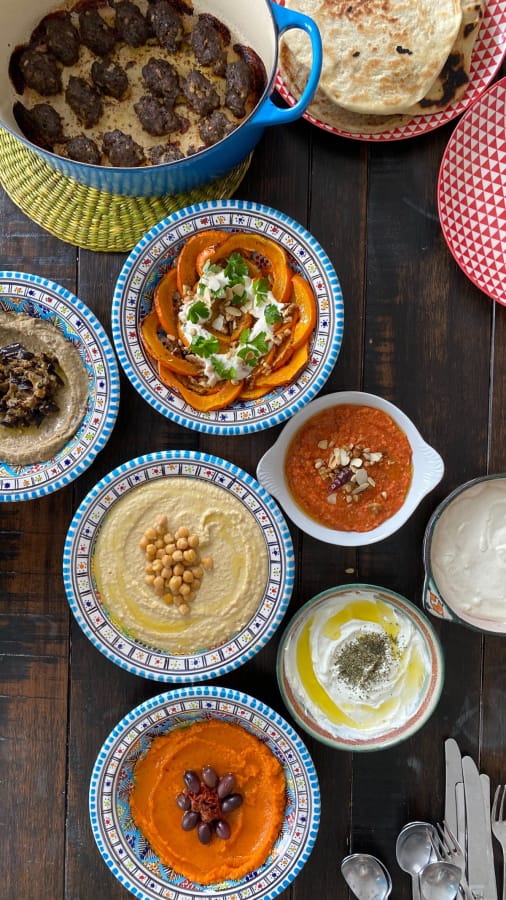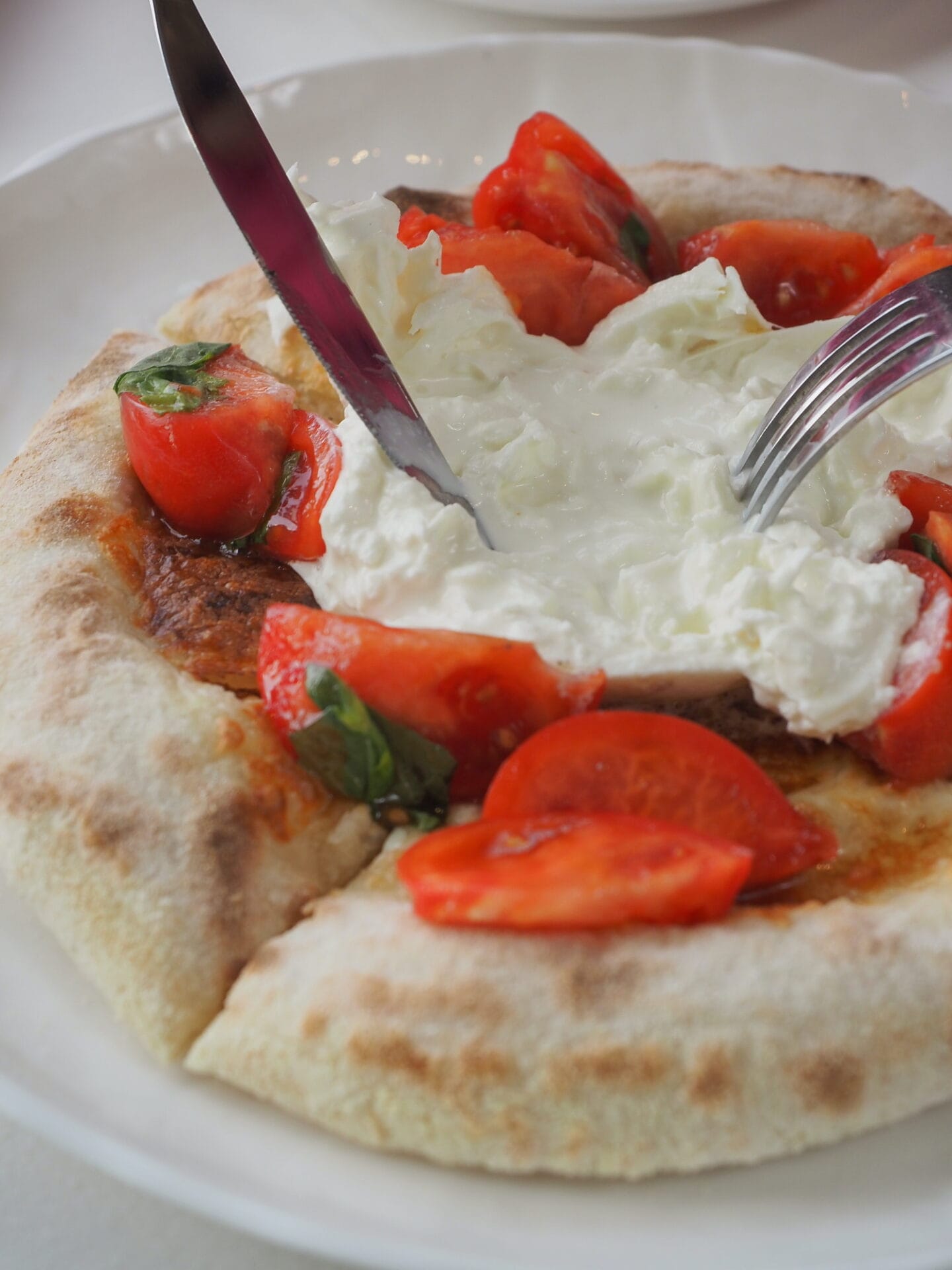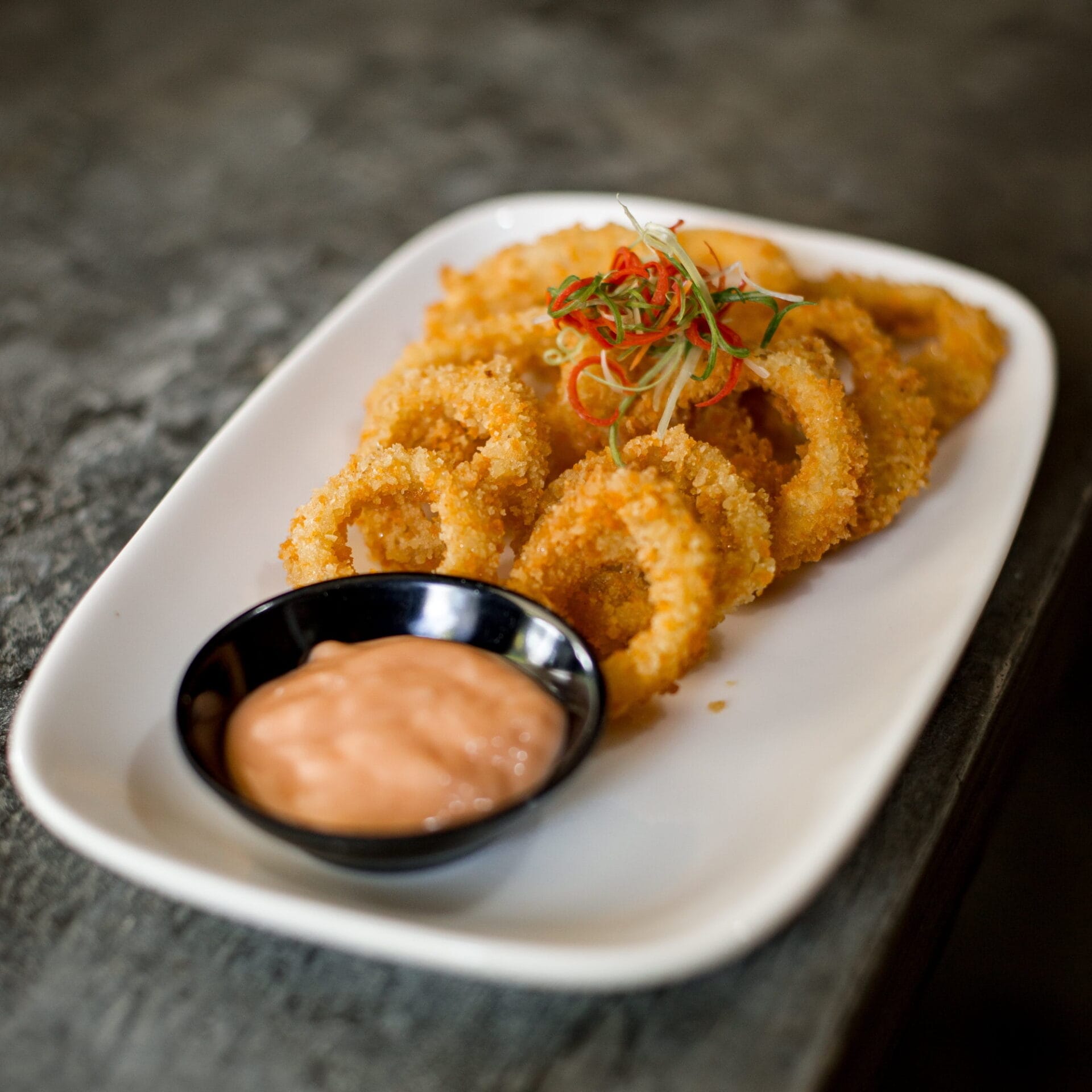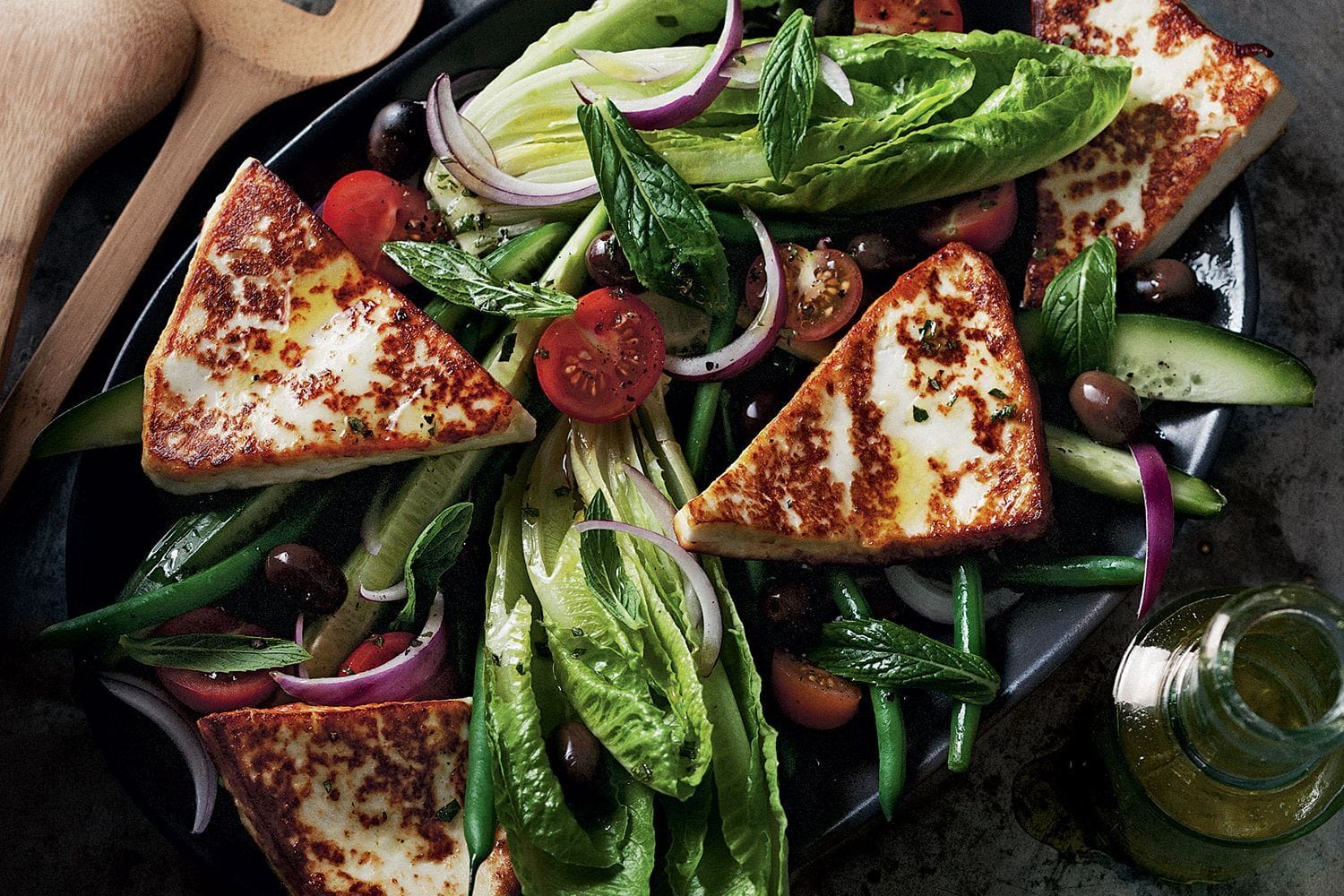What Is Mezze? A Mediterranean Food Dictionary

Despite the growing popularity of Mediterranean food in NYC, this culinary tradition remains a closed book to a lot of people. That may be because Mediterranean food is not a monolith – it’s the approach, shared history, and shared ingredients that bring this food together into a cuisine.
While some Mediterranean countries, like Italy and Greece, have firmly established their unique culinary presence in restaurants around the world, many aren’t sure what to expect when trying a New York Mediterranean restaurant for the first time. The concept of mezze provides the perfect entry into this diverse cuisine. Depending on where you are in the Med, this small-plate dining style is also known as tapas or antipasti, although there are subtle differences between how they are served.
When you eat mezze style, you order many small portions of different dishes, including classics like falafel, hummus, ceviche, and burrata dishes. Usually, all the dishes are served on individual plates, although some restaurants will put together a single custom platter made for sharing. Giving everyone at the table the opportunity to taste a little of each dish, mezze dishes can be enjoyed as a starter or brought together as the main course.
Grab your olive oil and join us as we unpack some of our favorite mezze classics.
Unpacking The Classic Mezze Meal
This communal style of eating is popular across the Mediterranean, so it’s no surprise that it’s a staple of Mediterranean food menus across New York. The classic mezze selection includes a variety of raw and cooked vegetables, dips and sauces, cheese, and bread, like pita or focaccia. As an iconic regional flavor, olives are all but de rigueur in most mezze offerings, especially on menus that skew more European. Proteins aren’t the main event here, but meat and fish do make appearances, often in the form of kebabs or ceviche.
Mezze dishes epitomize the heart-healthy Mediterranean approach to food, with plenty of colorful vegetables and legumes. Olive oil is the base of so many dishes, replacing the less healthy unsaturated fats like butter used in other cuisines.
At 19 Cleveland, much of our menu is presented in mezze style, with smaller dishes available to mix and match. If you’re joining us for lunch, start with our Nishnushim for some mezze classics to add to your meal. No matter the time of day, our signature selection of mouth-watering hummus flavors is a must-try.
Now that you have a good grasp of what mezze is, let’s dive into some of the most popular dishes you might find on a Mediterranean food menu.

Calamari - A Mediterranean Seafood Standard
This popular squid dish is a hit across the whole region, from Turkey to Portugal. Fried or sauteed to golden perfection, calamari is the perfect way to add the seafood element that Mediterranean food is famous for to your mezze selection. Packed with protein, squid is a great natural source of iron, calcium, and omega-3 fatty acids. We serve our Fried Calamari with some Mediterranean heat, our homemade tabasco, and Calabrian chili aioli.


A Dash of Dairy: Burrata, Halloumi & Labaneh
When putting together a well-rounded mezze meal, it’s vital not to forget a dairy element. You haven’t had Mediterranean food in NYC until you’ve tasted some of the region’s unique cheeses.
From fried halloumi to creamy labaneh, Mediterranean cheeses add depth of flavor and textures that perfectly complement a mezze meal. Halloumi is probably the most recognizable of the Mediterranean cheeses. This salty semi-soft cheese has a high melting point that’s perfect for grilling or frying and adding to salads, sandwiches, and wraps or enjoyed on its own.
Labaneh, often called labneh, is a tangy spread made from yogurt, which is strained until it thickens to a cream-cheese consistency. With a subtle, slightly savory flavor, it’s the perfect template for some of the bolder Mediterranean flavors, bringing a creamy element to any mezze. It’s popular on bread or as a dip, usually garnished with olive oil, herbs, and spices like za’atar.
If you’re a fan of mozzarella, burrata will be right up your alley. In fact, it was originally invented as a way to use up leftover mozzarella scraps. Surrounded by an outer layer of firmer mozzarella, the real joy of burrata lies beneath, in the soft, buttery center. It has a looser texture and a richer, creamier flavor profile, making it ideal to enjoy alone, drizzled with olive oil, or paired with tangy flavors like our cherry tomato jam and fermented jalapenos.
Savoring Healthy Mediterranean Food in NYC
Brunch, lunch, or dinner, NYC’s Mediterranean food scene offers a wide variety of delicious, healthy options. If mezze didn’t exist, we would have had to invent it to get the chance to sample all the mouth-watering flavors on offer. Mediterranean food was meant to be shared, to bring friends and family together around a table laden with out-of-this-world aromas and flavors.
At 19 Cleveland, we invite you to take a mezze approach to your meal, combining the dishes that excite you to create a unique flavor experience. Take a look at our menu and explore our delicious mezze-ready Nishnushim. If you’re not sure what to choose, our knowledgeable staff will help you put together a delicious combination of dishes to enjoy. Make a reservation and gather around our table for some of the best Mediterranean food in NYC.
